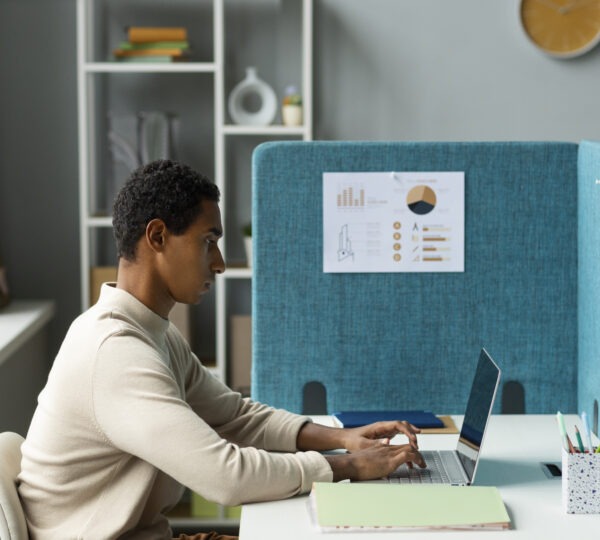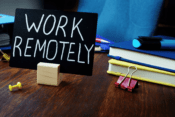
Screen Time Management for Remote Workers
Let me guess, you embarked on a remote work journey with the only thought that it would give you more flexibility, time for self-care, and fewer distractions, of course.
Now, if we talk about the present: You are at your desk, leaning over a laptop, with three back-to-back Zoom meetings, 47 open browser tabs, and you don’t even know how you have been looking at that screen for over 8 hours straight.
I have been in that situation.
Once, I noticed my face in the reflection of my laptop screen: red eyes, tight shoulders, and a headache from tension that seemed like my brain was fighting, a result of my constant “Just one more email” habit.
That was the moment I realized: Working from home had stealthily twice my time on the screen.
Fun Fact: According to Statista (2025), the average remote worker spends over 10 hours per day on screens, not including evening Netflix binges or late-night phone scrolling. That’s nearly 70% of your waking hours!
Why Screen Time is Sneakier for Remote Workers
When you are in an office, there are some natural breaks, like going for coffee, having casual chats, and walking to a meeting room. At home? It is just you, the laptop, and the screens in one eternal repeat.
Excessive screen time may cause the following:
- Digital eyestrain (blurred vision, dry eyes)
- Headaches & brain fog
- Poor posture causes neck/back pain
- Mental fatigue & lower productivity
- Uneasy sleeping patterns
Expert insight: “Remote workers often blur the lines between work and personal screen time without realizing it. This cumulative effect leads to cognitive overload,” says Dr. Nina Caldwell, an occupational therapist specializing in digital ergonomics.
Screen Time Survival Tips for Remote Workers
- The “50-10 Rule” (Not the 20-20-20 You have heard before)
The typical rule of thumb is to glance away every 20 minutes for 20 seconds. Honestly, when you are in a flow of work, you probably won’t remember it.
Why not set a timer to do 50 minutes of focused work and then have a 10-minute break without screens? Move your body or breathe. A simple 10-minute break will not only refresh your eyes but also allow you to concentrate better.
- Design a “Fake Commute”
One of the things that remote work has done to you is that it took your commute; however, you now have the opportunity to get it back!
- Before work: Take a 10-minute walk.
- After work: Stretch lightly or go for a short walk.
This gives a signal to your brain that you are switching between work and rest and also it provides you with a break from the screens.
- Use Screen Filters & Adjust Lighting
After sunset, blue light is the last thing you need.
- Get applications such as f.lux or activate Night Shift Mode on your gadgets.
- Adjust ambient lighting in your workspace to reduce glare.
- Bonus: Consider blue-light blocking glasses if you’re screen-heavy.
- Stack “Micro Digital Detoxes” in Your Day
It is important to note that you do not have to go to a weekend retreat in order to do a digital detox. For instance:
- No screen for the breakfast period.
- Bathroom breaks without phones (I know, I’m one of those people).
- Reading a physical book for 30 minutes instead of scrolling.
Pro Tip: Find a spot in your home that can be your “No Tech Zone” (even if it’s just one chair).
- Manage Notifications Like a Boss
Every “ping” pulls you back to the screen.
Batch-check emails and turn off unnecessary pop-up notifications on Slack, Teams, or your phone.
Expert insight: “Taking breaks from screens is not only beneficial for your eyes, but it also provides a cognitive reset,” says Dr. Susan Meyer, a psychologist who focuses on remote work fatigue. “Each time you go away, even for a short time, you stop decision fatigue from getting worse.”
Reality Check:
You remember the last time you went over TikTok “to relax” after work and got even more tired? Your brain is still one, but it has different parts that do not distinguish between “work screen time” and “leisure screen time.” Both of them drain energy. However, if you do such activities as journaling, walking, and doodling consciously and without the use of screens, they actually can refresh your brain.
Conclusion:
As a remote worker, managing screen time is not about deleting all your applications or going on a digital silent retreat.
It’s more about regaining some small bits of offline time during your day.
Those little tweaks getting up every hour, eating without a device, turning off unnecessary notifications- don’t go unnoticed.
You are not only being conscious of the use of your screen, but also are protecting not only the ones protecting your eyes and body posture, but also your concentration, creativity, and general health are being protected.
References
- Statista. (2025). Average Daily Screen Time of Remote Workers Worldwide.
- Harvard Business Review. (2024). Remote Work and Screen Time Fatigue: How to Set Boundaries.
- Caldwell, N. (2024). Digital Ergonomics for Remote Workers.
- The Sleep Foundation. (2024). How Blue Light Affects Sleep Patterns.













